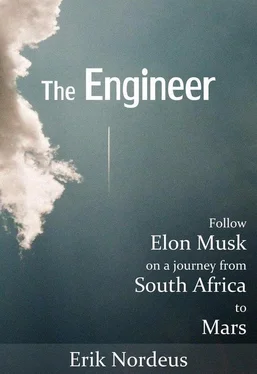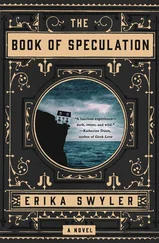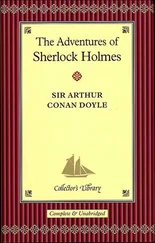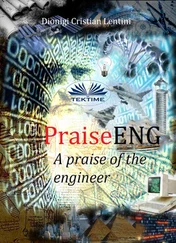A rocket can fail in a thousand different ways, but the number one reason is engine malfunctions. “There are a thousand things that can happen when you go to light a rocket engine, and only one of them is good,” Tom Mueller said. “We knew it would be hard, but it was harder than we thought.” 288
The third attempt to launch the Falcon 1 rocket occurred on August 3, 2008. “I stood around with the then 350 or so employees, and we cheered the vehicle on as it took off, and as we were watching the mission clock and knew that the stages were about to separate – the video feed was cut,” a SpaceXer said. “We knew something had gone wrong in a big way.” 404The rocket had failed for a third time. The first stage had separated from the second stage, but it didn’t fall back to Earth. The first stage’s rocket engines continued to push the first stage up against the second stage with the result that the entire rocket failed.
After the third launch, SpaceX didn’t just lose the rocket. They also lost two of NASA’s satellites and the ashes of 208 people whose last wish was to be launched into space. One of the 208 people was the Star Trek actor James “Scotty” Doohan. “Technically, Scotty’s ashes did get to space, they just didn’t stay there,” Elon said. 59,60
“The mood in the building hung thick with despair,” a SpaceXer said. Most employees had worked more than 80 hours a week to make sure the third launch was a success. 404To lighten the mood, Elon felt he needed to inspire his company with a message. “We knew this was going to be hard, it is after all rocket science,” he said. “The most important message I’d like to send right now is that SpaceX will not skip a beat in execution going forward. There should be absolutely zero question that SpaceX will prevail in reaching orbit and demonstrating reliable space transport. For my part, I will never give up and I mean never. Thanks for your hard work and now on to flight four.” 60What he wanted to do was to rally the employees and investors without creating false hope. “You’ve got to communicate, particularly within the company, the true state of the company,” he said. 22
The outcome of the message was exactly what Elon had hoped would happen. “I think most of us would have followed him into the gates of hell carrying suntan oil after that,” a SpaceXer said. “Within moments the energy of the building went from despair and defeat to a massive buzz of determination as people began to focus on moving forward instead of looking back. I wish I had video footage as I would love to analyze the shifts in body language that occurred over those five seconds.” 404
If the fourth rocket failed, SpaceX would die. 25“When people really understand it’s do or die but if we work hard and pull through, there’s going to be a great outcome, people will give it everything they’ve got,” Elon said. 22Everything hinged on the fourth launch. SpaceX had financed the rocket by selling future launches. If the rocket failed again, SpaceX had to return the money. “It would have been over,” Adeo Ressi said. “We’re talking Harvard Business School case study – rich guy who goes into the rocket business and loses it all.” 278
Another Iceberg, Right Ahead
Tesla Motors began to shiver in 2007. Several Tesla board members became concerned that the CEO, Martin Eberhard, couldn’t control the growing company. One of the investors in Tesla did his own cost analysis with the help of external consultants, and he saw that the cost of producing the first version of the Roadster had climbed from $70 000 to at least $130 000. 59“This CEO [Eberhard] would not admit the problems and ask for help,” a board member said. “You must develop commitments from data and set them in reality, not just hope it works out. We did not believe that this registered with him, and the board felt compelled to take action.” In a similar way as when Elon agreed to replace himself as CEO of Zip2, Eberhard agreed to join a board subcommittee to search for his own replacement. 196
Elon thought Eberhard had hidden these cost overruns from the board, so Eberhard had to step down before Tesla found his replacement. It came as a surprise to Eberhard. “My relationship with Elon was really good until the very last minute,” Eberhard said. “He might portray this very differently, but he and I were on good speaking terms until the day last August when he called me to tell me I wasn’t CEO any more. That was totally unexpected. It was a whack on the side of the head.” 205
In August 2007, Tesla replaced Eberhard with Michael Marks. He would work as an interim CEO until Tesla could find a long-term CEO. Elon knew he couldn’t run the company himself – he already worked as the CEO and CTO of SpaceX. Eberhard, now demoted to the president of technology, would still earn the same salary as when he worked as CEO. This position suited him better. “I’m an engineer, not a finance guy,” he said. But five weeks later, in October, Marks informed Eberhard he could no longer work in the company because it was unsustainable due to Elon’s persistent calls for Eberhard’s termination. “I should have been more careful,” Eberhard said. “I shouldn’t have let Elon take a disproportionate control of the board.” 196,208
Eberhard didn’t leave the company unnoticed. He felt he was mistreated. While he tried to lower the costs of the Roadster by using standardized parts, Elon was the one who demanded the more expensive parts. Elon, however, denied that the changes he made burdened the company. 59Eberhard thought he had been a scapegoat and sued Tesla. “I am not at all happy with the way I was treated, and I do not think this was the very best way to handle a transition – not the best for Tesla, not the best for Tesla’s customers, and not for Tesla’s investors,” Eberhard said. 201
75 percent of the lawsuit consisted of attached media articles. The articles consisted of interviews with Elon and contained quotes where Elon said he was the founder of Tesla. You couldn’t find the name Eberhard anywhere in these articles. Eberhard accused Elon of trying to rewrite the history by trying to take ownership of the idea behind the company. 70The truth was that Eberhard co-founded the company in 2003 before Elon came in as an investor, so Eberhard wanted to be recognized as one of the co-founders. Elon, however, argued that Tesla was just an empty shell when he arrived. “He [Eberhard] had no technology of his own, he did not have a prototype car and he owned no intellectual property relating to electric cars. All he had was a business plan to commercialize the AC Propulsion tzero electric sports car concept.” 230
Another part of the lawsuit claimed that Elon had lied about how he dropped out from a PhD program and his degree in physics. The lawsuit said:
In several national publications, Musk has allegedly misrepresented his affiliation with Stanford University, claiming to have “dropped out” of a PhD program at that university when in fact he was never enrolled at Stanford.
Musk has falsely claimed to have a degree in Physics from the University of Pennsylvania that he obtained in 1995, when he in fact has no such degree and the only degree he holds was obtained later than that. Upon information and belief, Musk’s only known undergraduate degree is a Bachelor of Science in Economics, obtained from the University of Pennsylvania in May 1997. 454
Because of these allegations, Tesla sued Eberhard. “This lawsuit is an unfair personal attack and, more importantly, paints an inaccurate picture of Tesla’s history,” the company said. “This lawsuit is a fictionalized account of Tesla’s early years – it’s twisted and wrong, and we welcome the opportunity to set the record straight.” 208
Читать дальше











